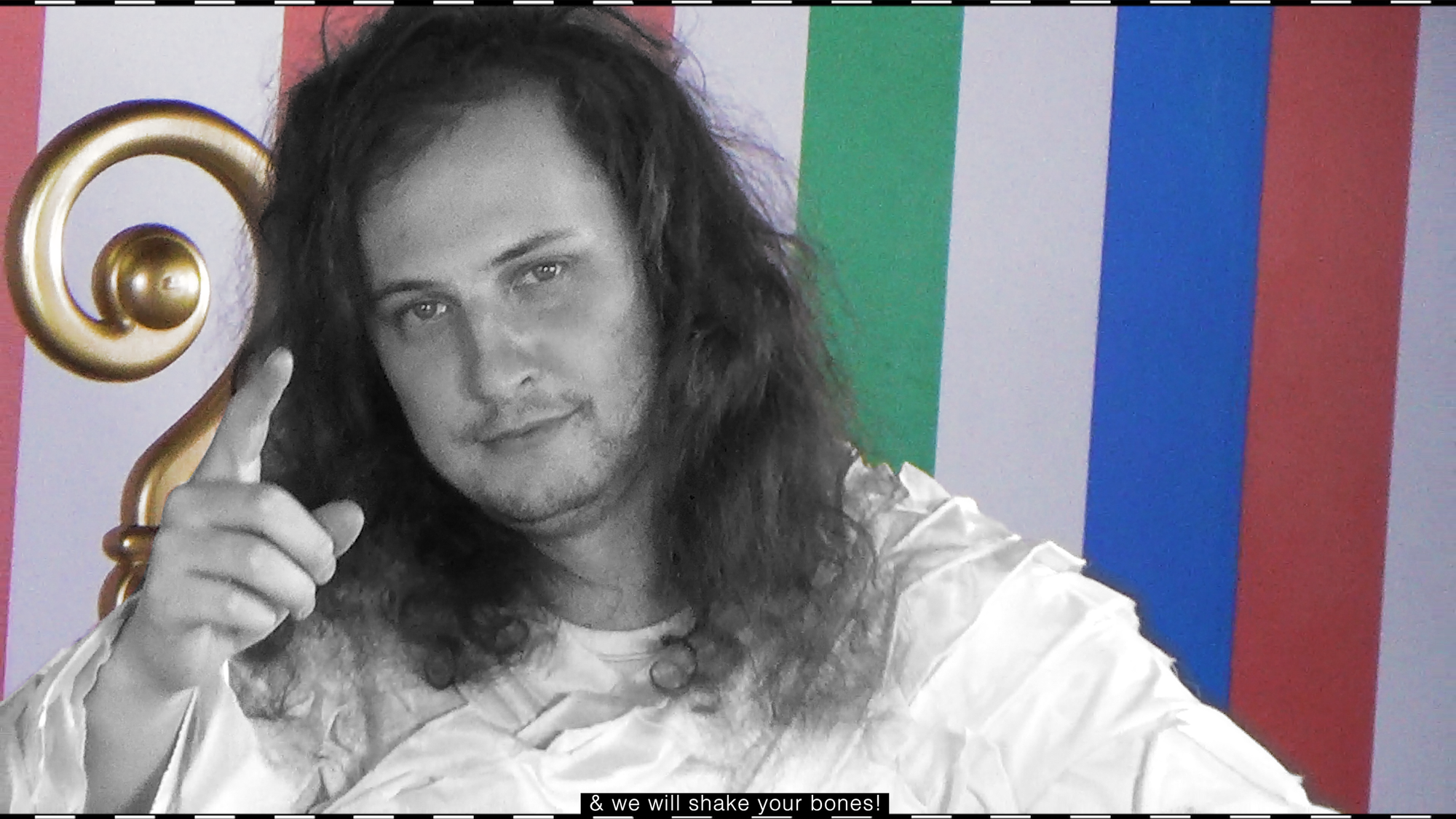DIS: The Influencing Machine presents "Spooky Castle"
An Experimental Anthropology of The Soros Center for Contemporary Art Network

I started this project back in 2020. After producing a glossary of terms relating to "fake grassroots" or astroturfing, I was contacted by curator and researcher, Aaron Moulton. We started a dialog and developed into a sprawling plotter wallpaper print of the Astroturfs map for his exhibition in Warsaw Poland. The show was an incredible work of political art, a survey of a hidden history, a collection of current actions within an anomalous space that refracted and magnified the themes. In fall of last year, close friend and trusted operative, Abbey Pusz and I travelled to Poland to see the show IRL. While we were there, we produced and shot a TV Show in one night with Aaron. It was the most challenging, chaotic and uneasy circumstances to perform under that I have ever attempted. We spent the next year editing, cutting, designing, animating, making music, finding materials, digging through archives, compiling, subtitling, and delivering a 33min "TV Show as Performance Piece." DIS Magazine, the standard bearer for post-internet & political art, published the piece which you can watch on Dis.art.
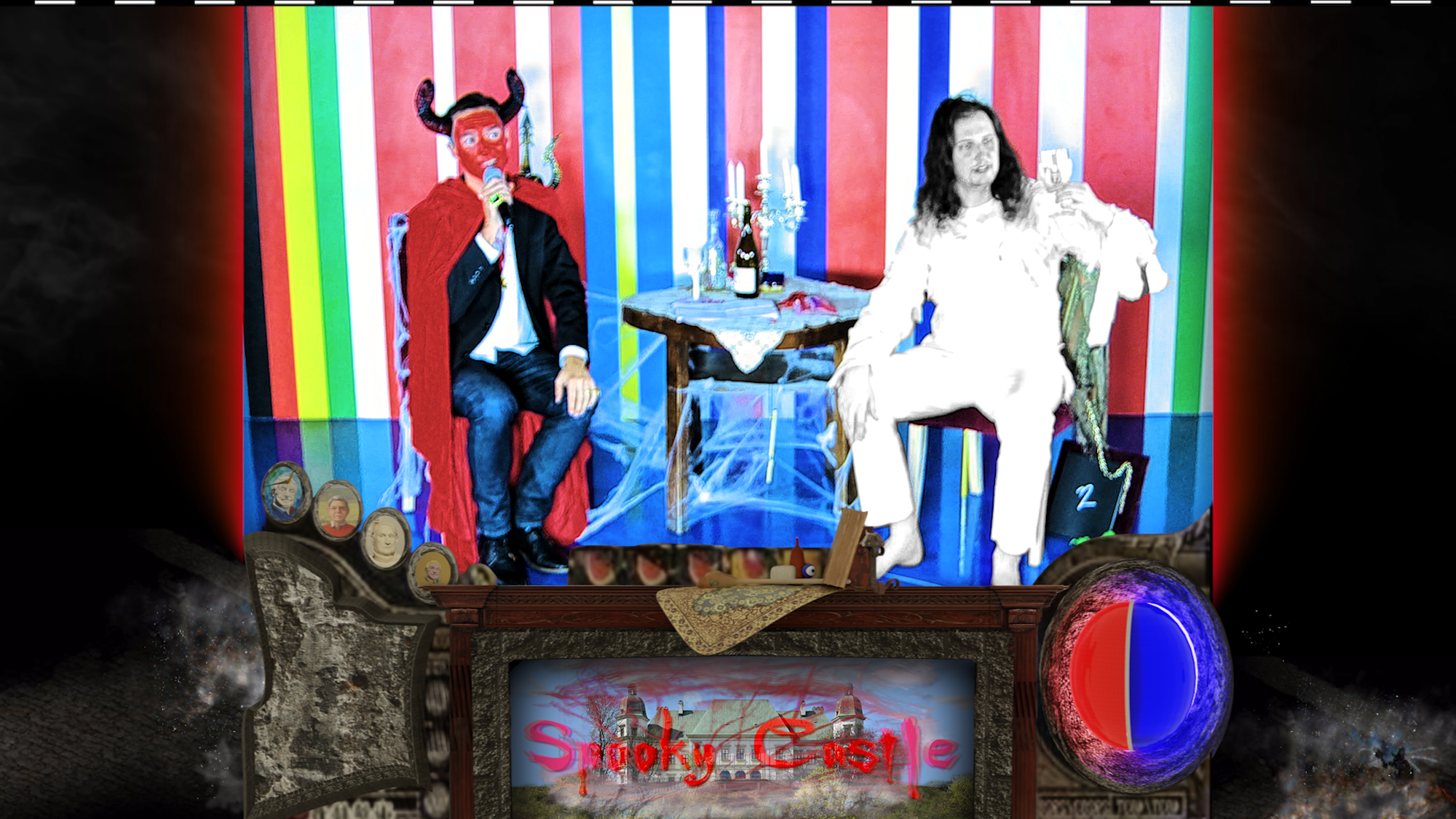
Since publishing, the piece has received a great response. It is truly so fulfilling after putting everything into a work that compounds all areas of my practice: political discourse, deep research, performance & events, video production, animation, media experimentation. As in depth and content rich the 33min video is, it is really only scratching the surface of the iceberg of information that Aaron's research uncovered. In order to share more context around the story, I decided to put together an "Instagram Takeover" of the DIS account by The Influencing Machine. IG Takeovers are usually the domain of pop music promotion or product-haul-influencer pages. But I wanted to see what would happen if this tradition was put to work to spread critical discourse.

I am an avid Instagram Stories poster, often engaging in "caterpillaring" or when you post so many stories the little dashes at the top look like a caterpillar, so I thought this would be the perfect opportunity to try and make a durable experience by condensing Aaron's incredibly cogent book and adding a bit of my own analysis, juxtapositions, leaked intel and framing into the mix. To watch the insane IG Stories in the wild, go to @DIS on Instagram and look for the "🧿" highlight in the profile.
THIS IS NOT A DRILL !!!
Below, is the text for the takeover in regular blog format, for those who do not have instagram or good enough eyesight to read the little text on the phone.

CHAPTER 1 - NETWORK
"The Influencing Machine: Procedures Manual" is a work of experimental anthropology by Aaron Moulton. Over a period of seventeen years, Moulton collected unheard testimony (50+ interviews) and previously undisclosed archives of the SCCA Network. This sprawling case study examines the birth of Contemporary Art as a phenomenon brought forth by the NGO organizational structure. Through this model, the experience of art was refined into an arena for opening and shifting public discourse or what would later be known as "socially engaged practice." This disappearing history offers a behind-the-scene look at how the artworld we know today was synthesized, tested, and set-loose into the world.
The book focuses on an exclusive and extremely extensive oral history given by Suzy Mészöly, the pioneering architect of The SCCA Network. As an Australian exchange student in her native Hungary at 21, she started a guerilla art collective known as Újlak Group. She began working at The Soros Foundation Fine Art Documentation Center in Budapest. In 1991, as executive director she convinced George Soros to change the name to The Soros Center for Contemporary Art. Mészöly dedicated over a decade of her life to the project of experimenting with new media, tactics and procedures that placed art in the public sphere.
Mészöly chaired a symposium titled "The Media Were With Us" just months after the 'Romanian television revolution' of 1990. This incredible two day televised discourse program in Budapest can be seen as the proto-SCCA event with its ambitious scale and potential political impact. Vilém Flusser gave a presentation analyzing the way that the revolution had unfolded through a recursive TV loop. The Brazilian-Czech philosopher put forth the idea of "codes" or ways that mass communication describes reality under increasing levels of alienation. It was clear from this event, that the terrain of media and perception would be the pivotal zones for political power.
"Communicology" An advert from Spooky Castle remixing "The Media Are With Us!: The Role of Television in the Romanian Revolution" 1990, C3 Archive
There are harrowing stories of Mészöly flying onto the tarmac of the Sarajevo airport under gunfire and being taken in an armored military vehicle to SCCA operations where, with her support, they continued planning a cultural intervention despite the war happening around them. She was at the SCCA in Belgrade when the news came in that George Soros had gone on TV to announce that he supported the NATO invasion of Serbia. At that moment she and her colleagues were uncertain of their own fates. This was a very different kind of art-world management. / pg20
Scripted Avant-Guarde
The NGO structure minted the curator as the central node in the creation of art, not the artist. Within this structure the curator would conceptualize an exhibition and disperse resources to local artists to carry out the production of the artwork. Mészöly was inspired by Creative Times "The 42nd Street Art Project" 1993 to use an "Open Call" to select works for Polyphony 1993, a sprawling exhibition that sought to use social consciousness as a medium. The open call procedure for curation was then synchronized throughout The SCCA Network within the following year. The central coordination of the NGO structure afforded incredible speed for new tendencies to spread, take hold and become norms.
The Network essentially created three kinds of artists. There were international biennial artists who did the NGO dance best and presented their regions in an aspirational European patois, a universal artistic language. They would likely speak great English and be able to mingle within any international art scene.
Then there were the local limit testers who put on whatever hat the open call requested and embraced the new conditions. They were part of a new wave of technology or trends and yet might not be as accessible to an international audience.
And then, beyond the periphery in outer darkness, there were those who were not included in the art-of-the-open-society dialogue, who we learn almost nothing about due to a practice of exclusion. They were either part of the open-call process and rejected, or were holdovers from the preexisting art world. / pg47
In the end, the Open Call format had refined into something less-than-open:
Irina Cios, “One day Soros said let’s do it, and the next moment he says I don’t care about art, let’s close it.” In communism there were hundreds, even thousands of artists who had their own version of self-actualization. The SCCA Network reduced the number of those who were seen as legitimate artists to a very small number, which was felt locally. In reality the SCCA, the avant-garde of the open society, was paradoxically an elite club. / pg59
Suzy, 2022 - by Aaron Moulton & Mike Morrell
After transitioning the SCCA Budapest into C3: Center for Culture and Communication, Suzy Mészöly was fired unceremoniously in what she describes as a coup. Today Suzy Mészöly lives in upstate New York and is a medicine woman and a New Age healer. Her unknown story illustrates just how instrumental the institutional layer was in the development of socially engaged artistic practice. Mészöly is perhaps one of the greatest curators to transform our understanding of art today, producing what Flusser might have described as a "code" in mass communication. She empowered an army of artists with the specific political intention of creating a more open society or as former SCCA Chisinau Director Octavian Esanu frames it in The Postsocialist Contemporary, 2021: “contemporary art was born as if by the divine intervention of the SCCA program.” - pg29

CHAPTER 2 - BOOGEYMAN
In the late 1980s, Hungarian-American, George Soros, hits it big in stock arbitrage with a novel market analysis that incorporates the idea of Reflexivity: the view that as we are acting upon the world as we make sense of the world. Positive feedback between prices, expectations and economic fundamentals prevent equilibrium. This paradox of free will and determinism challenges the mainstream view of free markets, one that holds equilibrium and rational consumer choices as the basis for prediction. After making his billions, Soros turned to philanthropy to apply his philosophy of Reflexivity. He created the Open Society Institute in the image of his mentor Karl Popper and put his archetypical NGO to work creating positive feedback loops in economies, governments and cultures throughout Eastern Europe in the 1980s.
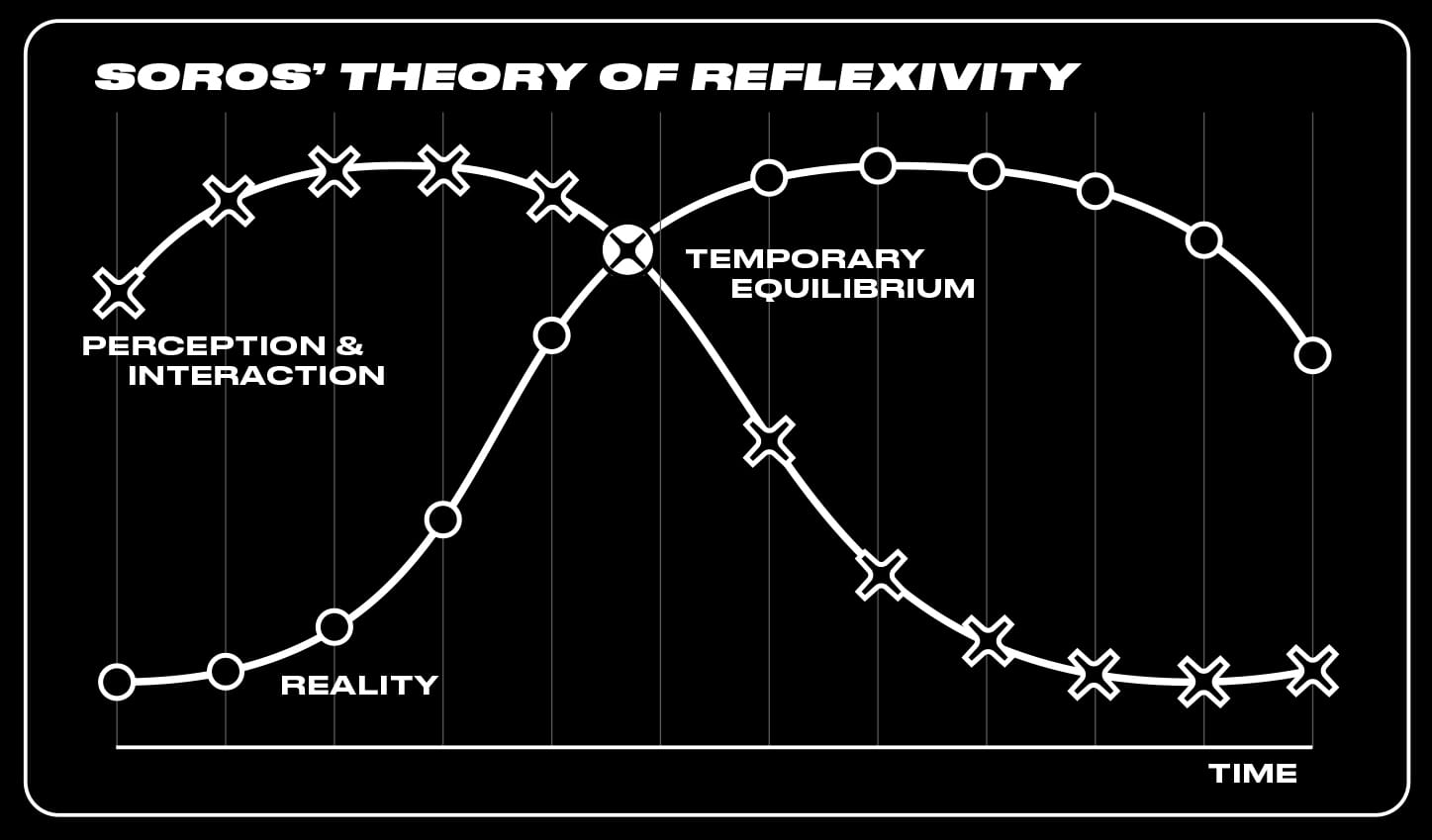
An aspect of George Soros’s biography and cultural background that is never enjoyed enough is that he is a second-generation Esperantist. George’s father, Tividar Schwartz, was a publisher of Esperanto books who raised his children in Esperanto, Earth’s official auxiliary language. Tividar was not just an enthusiast; he was a decidedly proselytizing force who saw it as his mission to proliferate the language. Flusser describes language as a mutation of the human species. (Communicology 2021) for Esperantists the universal dialect was seen as the next rung in the evolutionary ladder, moving the dialog past divisions of language and culture. Gyorgy Schwartz, was given an Esperanto name: “Soros,” which means “will soar.”
There is a chilling effect created by the abundance of conspiracism that surrounds George Soros. Antisemitic tropes shutdown any (positive or negative) discussion of his impact in popular discourse. Similar dynamics are taking hold around new billionaires like Peter Thiel, Elon Musk and Mark Zuckerberg where serious critique is often obfuscated by an inundation of paranoid machinations. Nevertheless, Soros has erected the greatest network of civil society organizations across the globe and in doing so created a durable model for soft power development that defines contemporary capitalism. Studying The SCCA Network allows us to investigate the influence of his legacy safely within zone of exception carved out by Art.
At the same time there is a "halo effect" that follows philanthropic NGO development work. Trough the funding of art and culture the ultra-wealthy attempt to translate economic power into political power. Indivuduals and companies seeking this funding are incentivized to speak in glowing terms about the impact of donors. Conversely, artists and cultural producers seeking authenticity within these astroturfed scenes describe a sense of paranoia that is definitely felt today in the churn of Dimes Square "Theilbux" hit-pieces.
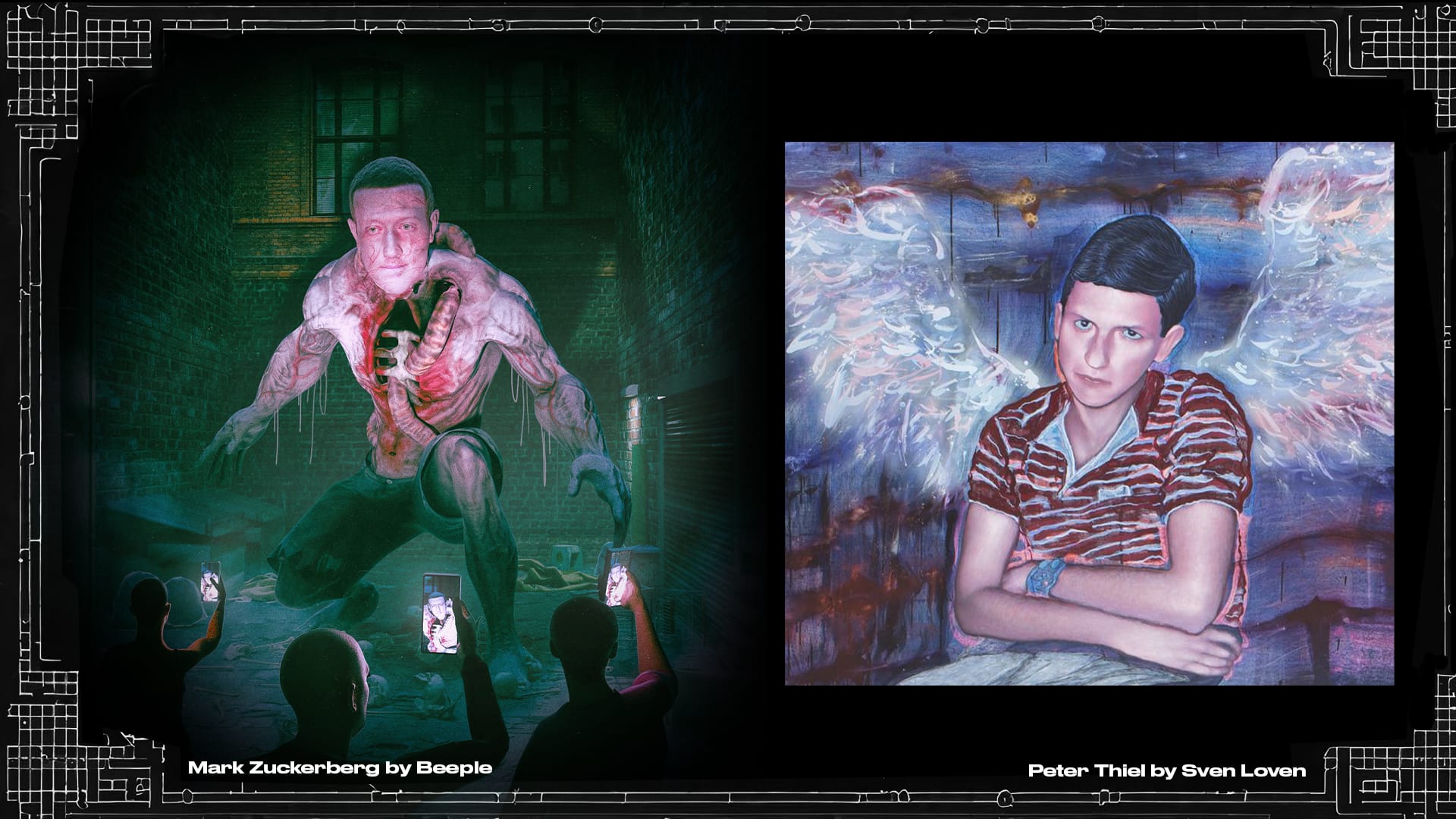
Other untold histories that have become accepted recently are the CIA's funding of the abstract expressionism movement through cut-out companies as a way to ideologically and aesthetically counter Communism during the Cold War. The revelation of documenta D3 director, Werner Haftmann's secret past as an nazi-collaborator and the exhibition of work stolen from Jewish collectors during the war presented without context. (documenta: Art and Politics, DHM Berlin 2021.) Outside the art world, a "Stay Behind" network of spies uncovered in post-war Italy was responsible for covertly stoking partisan violence. This story was exposed by Allan Francovich’s epic documentary Gladio (1992) which was included in The Influencing Machine's film program. It is imperative to move beyond the reductions of conspiracy theory and sanitized histories to grapple with the complex reality of soft power.
In 2002, Geert Lovink wrote an essay titled Soros and the NGO Question, or The Art of Being Independent in which he laments, "Who can afford to criticize Soros in a society with no alternative funding?" explaining, "Temporary, freelance workers are both inside and outside of the culture industry. Within the world of foundations, everyone becomes either client or donor. There are only few permanent staff members. This makes institutional critique in Eastern Europe a rather ambivalent, dangerous activity" in an interview with Moulton in 2022, Lovink reflected on the impact of The SCCA saying, "the NGO model was not a given. There was, and still is, a range of organizational forms at the disposal of artists.The NGO is a specific legal, administrative model of ‘staff’ working in an ‘office’, guided by a ‘director’ and a ‘board’. Needless to say, there are multitudes of other forms of self-organization." In a text titled The Corporate and Market Strategies for Contemporary Art in Eastern Europe in the 1990s, Karolina Labowicz-Dymanus looks at how the NGO movement in art censors not by forbidding but by financing. The term she uses for this is “coercive philanthropy,” a term coined by Robert Brustein to discuss the Ford Foundation’s pioneering of such a philanthropic model.
Soros' theory of Reflexivity was put into practice by the Open Society Institute and translated into art and culture programming through the socially engaged art of The SCCA Network. Massive development projects laid internet cables throughout Eastern Europe that would then become enriched as a technology for artists. This experiment came to close after Soros lost an incredible amount of capital as the Dot-com bubble burst. SCCA satellites were forced to either transition to new funding structures during "The Sunset Years" or shutdown completely.
George Soros didn’t understand what was happening in the region with art, including products showing clear evidence of his support. And whatever he did understand he didn’t really like that much. He has said almost nothing about his cosmological world-building of the contemporary art culture of the region. / pg69

CHAPTER 3 - EXHIBITION
The Influencing Machine (2022) presented art from across the Network, throughout Eastern Europe (and the world), from past to present, case studies and anomalies in material form. The show was a politically-site-specific work that encourages the taboo question: who is funding this and why? - the following are highlights from the exhibition.
Gallery 1 - Shock Therapy - Joshua Citarella, Yerbossyn Meldibekov, Ciprian Muresan, Post-America - Entering The Influencing Machine is entering at Point Zero. Your body, your identity and your mind is a battleground. - Ciprian Muresan’s animated sculpture shows the process of writing history played out through the live-action drama of sectarian slapstick. Mureșan has made several archetypal forms atop pedestals that have run amok in the gallery.
Gallery 2 - Neoliberation - Ivan Fijolić, Ivan Grubanov, Christian Jankowski, Lucia Nimcová, Anetta Mona Chişa & Lucia Tkáčová, Gulnara Kasmalieva & Muratbek Djumaliev - Archetypal remnants and specters of the fallen regime, the Closed Society in the face of Disaster Capitalism. - Heavy Weight History from Christian Jankowski, the artist reveals the physical impossibilities of preserving history. Polish bodybuilders wrestle to lift the weight of enormous public sculptures who they prove incapable of keeping in the position of power.
Gallery 3 - The Precarity of the Avant-Garde - Luchezar Boyadjiev, Anetta Mona Chişa & Lucia Tkáčová, Joshua Citarella & Jacob Hurwitz-Goodman - "I am going to make a revolutionary show, get famous, get a good residence, start exhibiting in the West, get a gallerist and sign a contract, hit all the cool parties, marry a curator, win a prize, start ap- pearing on TV, sell art for a while, hit a dry spell, make a comeback, win another prize, get divorced, start painting, sell a lot, get rich, marry an art collector, write a memoir, become a legend and then fade out." Anetta Mona Chişa & Lucia Tkáčová How to Start a Revolution, 2008
Gallery 4 - Soros Realism - Daniel Baker, Mike Bouchet, Luchezar Boyadjiev, János Brückner , Jakup Ferri, Adrian Ghenie, Hortensia Mi Kafchin, The Krasnals, Zbigniew Libera, Jon McNaughton, Oksana Pasaiko, Şerban Savu, Andres Serrano, János Sugár - Magical Capitalism, a spiritualized alchemy of culture and finance. He worked across these lands to sow his seeds of enlightenment unconcerned with social consequences. Through this applied therapy we can become stronger together.
Gallery 5 - Aspirational Union - Eva & Franco Mattes, Mihaela Minca, Ciprian Mureşan, OMA/AMO - Coming from Bucharest, Mihaela Minca is the most powerful witch in Europe. Together with her three daughters (Anda, Casandra and Ana) they are the most well known coven in the world. They are recently famous for their effort to change the course of European politics, regionally in Romania but also throughout the European Union. They do this through magic rituals and superstitious traditions. In addition to being orthodox Christians, they are ambassadors of the Roma’s undying faith in energy work and Pagan traditions, traditions that make up the incredible fabric of the European Union and its people. In their eyes, God put all of this energy on the Earth – the good and the evil – and Minca and her coven use white, red & black magic to steward all of God’s energy as their fateful duty to humankind.
Gallery 6 - Tactical Media Literacy Lab & Archive - János Brückner, Chris Burden, Nina Czegledy, Ole Dammegard, David Dees, Constant Dullaart, Dorian Electra, Jacob Broms Englom, Ole Häntzschel, Corporate Kafka, Filip Kostic, Mike Morrell, Oksana Pasaiko, Kirsten Pieroth, Post-America, Abbey Pusz, Jak Ritger & Clack Auden, Arsen Savadov & Georgiy Senchenko, SCCA Network Archive - This final gallery is an inundation of data in a spiraling form, the fast-beating heart of The Influencing Machine itself. This is a zone of paranoid mind maps, archives and history emerging from the same soup. Tactical media experiments, art as propaganda, active measures as art; it is a place where conspiracy shifts from theory to cultural practice.

CHAPTER 4 - SPOOKY CASTLE - GLOSSARY | AUXILIARY RESEARCH | WORKS OF INTEREST
Pre-order the Book via Special Effects.zone
Visit the website, a trove of archive material, leaked documents and exhibition details. compiled by net artist Sara Bezovsek. Look for the golden easter egg to unlock the final secret.
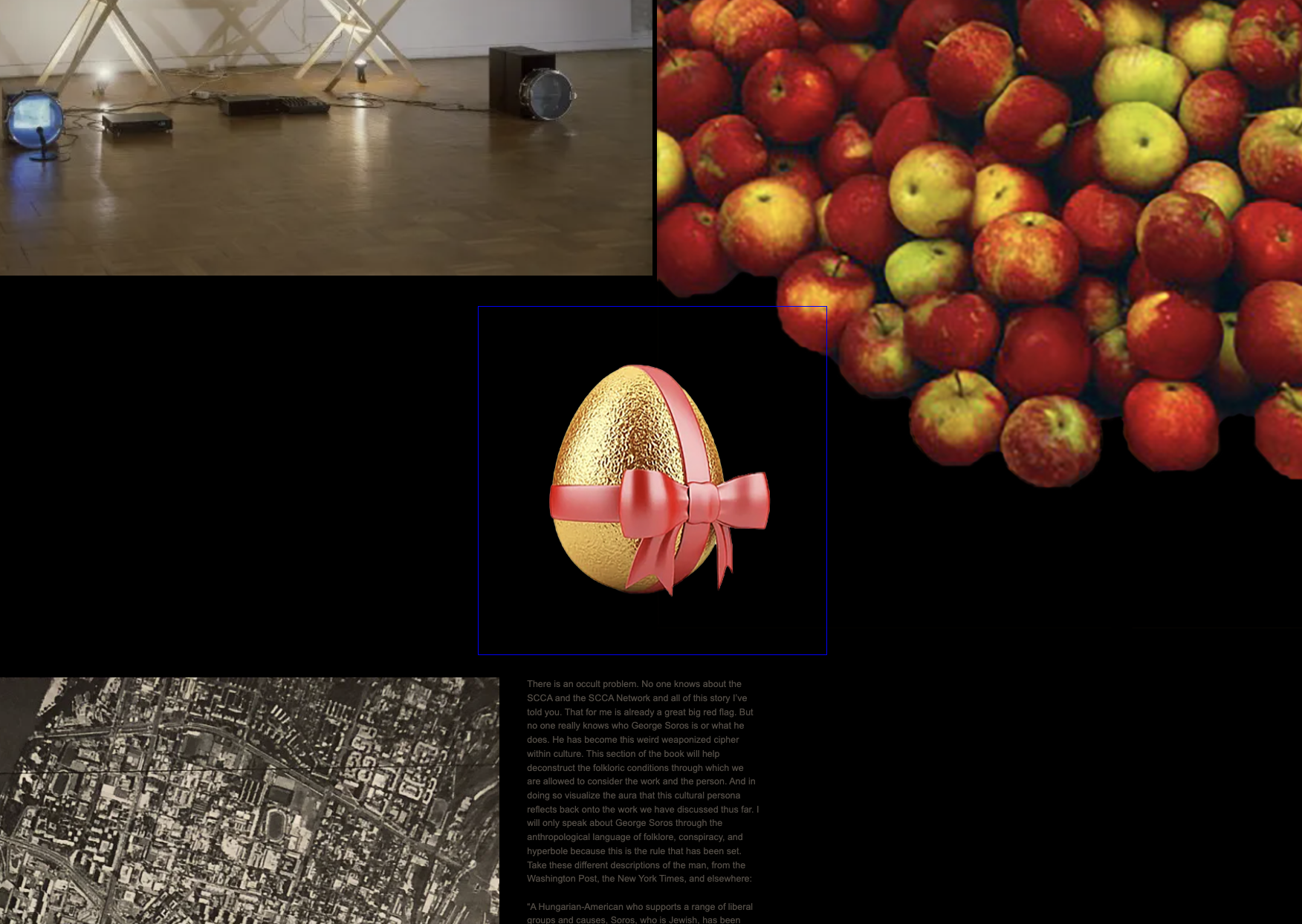
Re-watch Spooky Castle with live chat & commentary by Joshua Citarella, streamed on Twitch, Nov 20, 2023 edition of Monday Night Memes.
Additionally, Joshua Citarella interviewed Aaron Moulton about the political implications of The SCCA in Eastern Europe and beyond. Listen to their in-depth discussion here.

Key Terminology & Associated Studies
S.U.S. Astroturfs of Offense on New Models podcast & Editorial #2. S.U.S. is an "intelligence agency for the left" that does not exist. In 2020, within the NEW MODELS discord, artist and theorist, Jak Ritger teamed up with heteronymous researcher, Clack Auden to produce a glossary of terms to help navigate the Shifting Uncertain Situations of contemporary protest. The "Astroturf's Of Offense Glossary Diagram served as a cognitive map for The Influencing Machine.
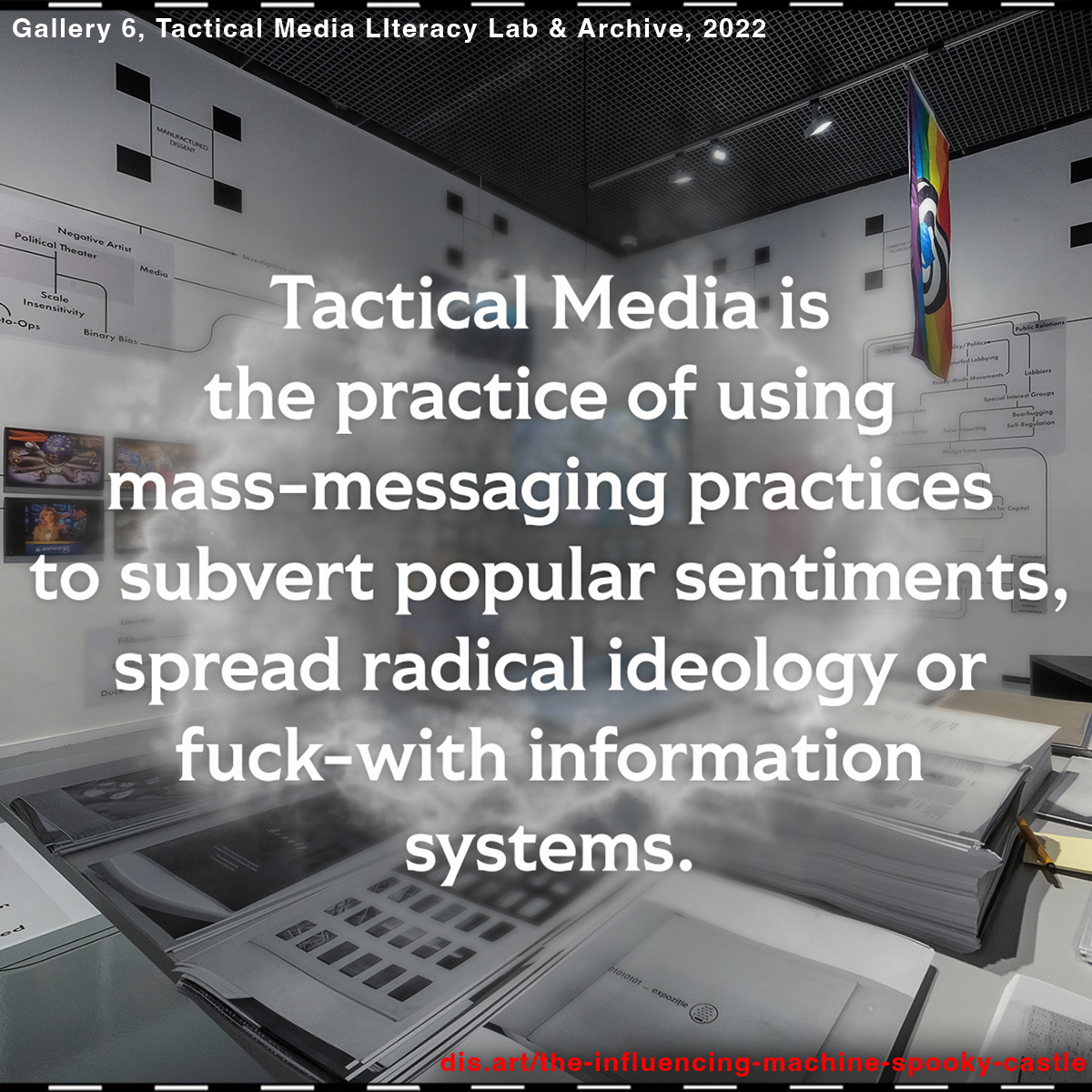
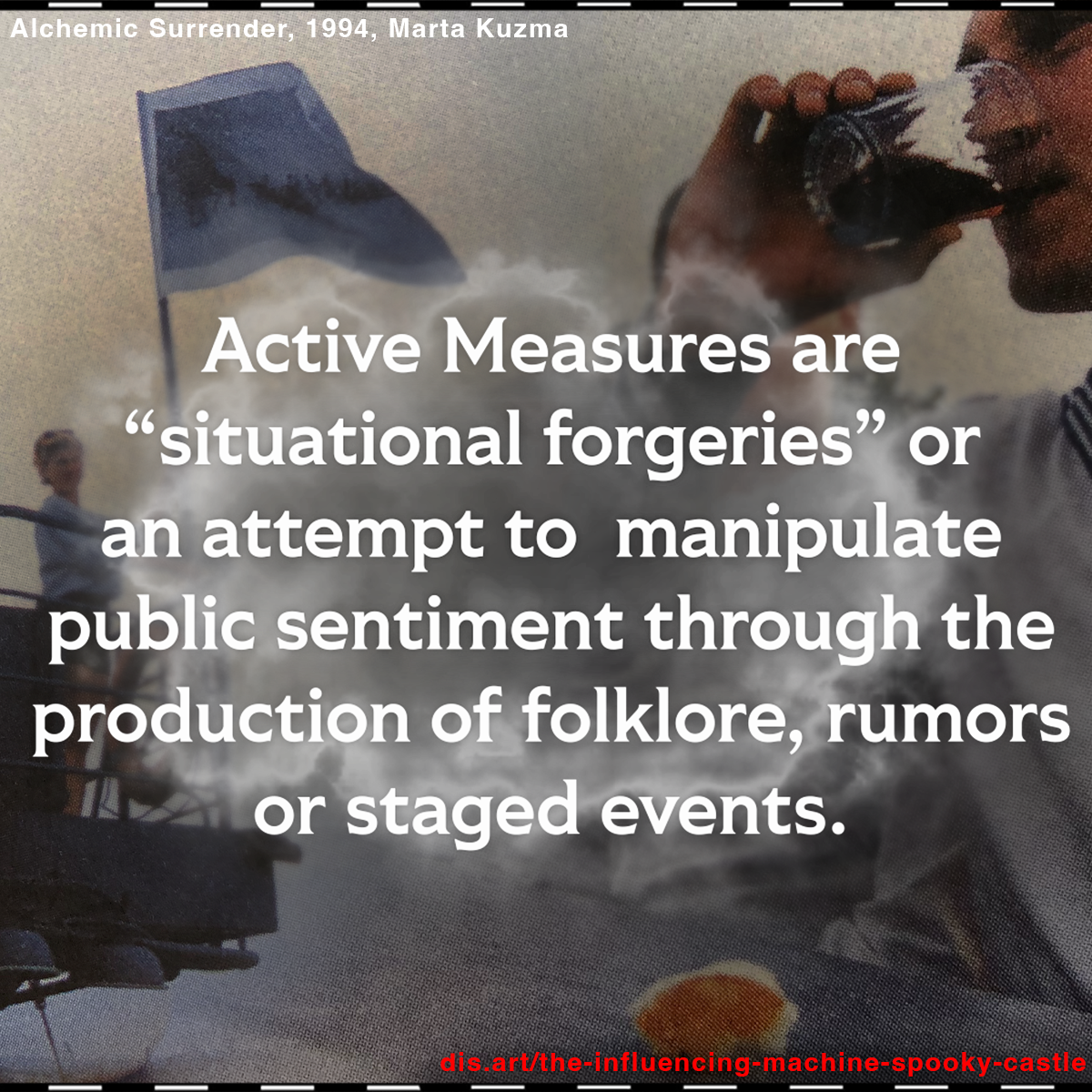
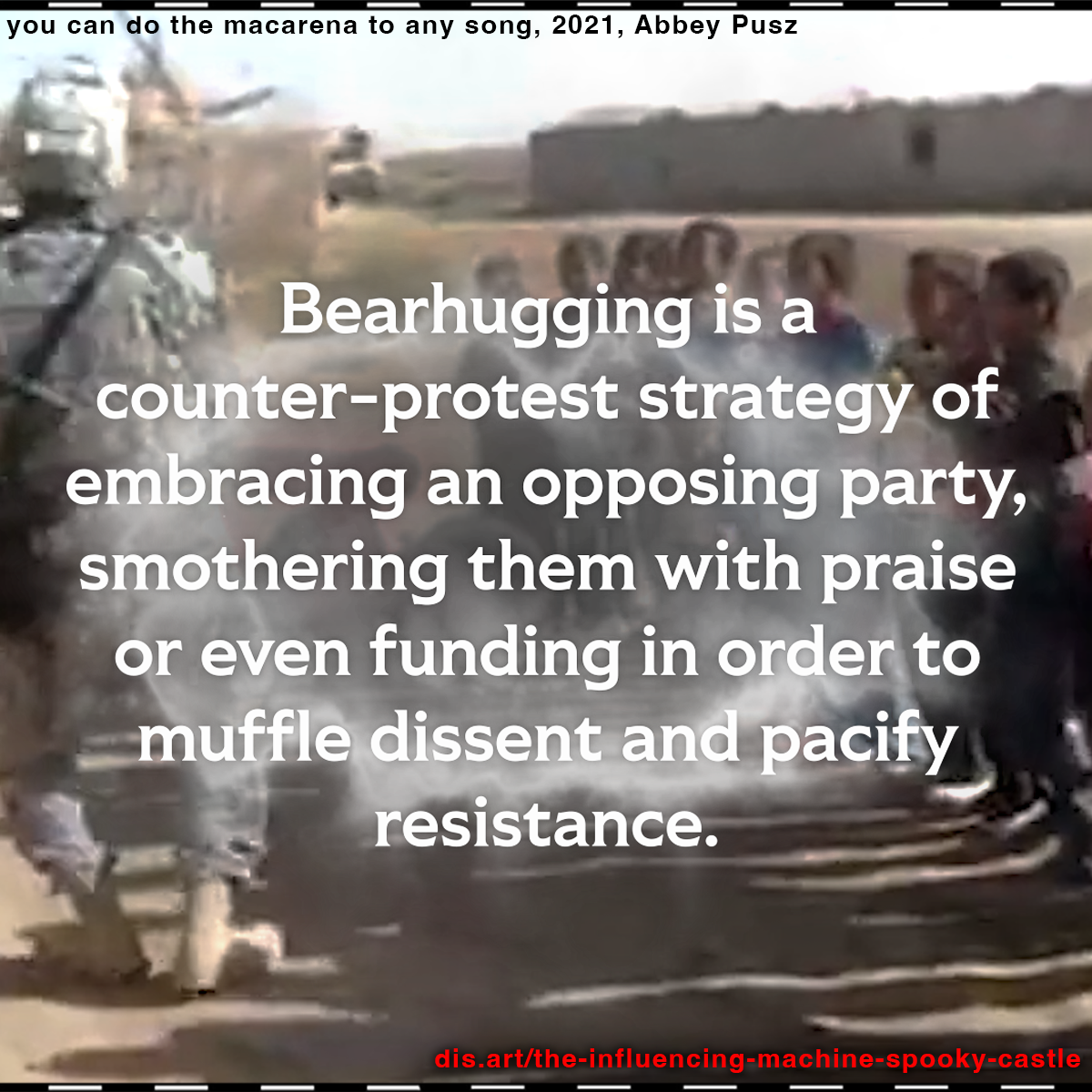
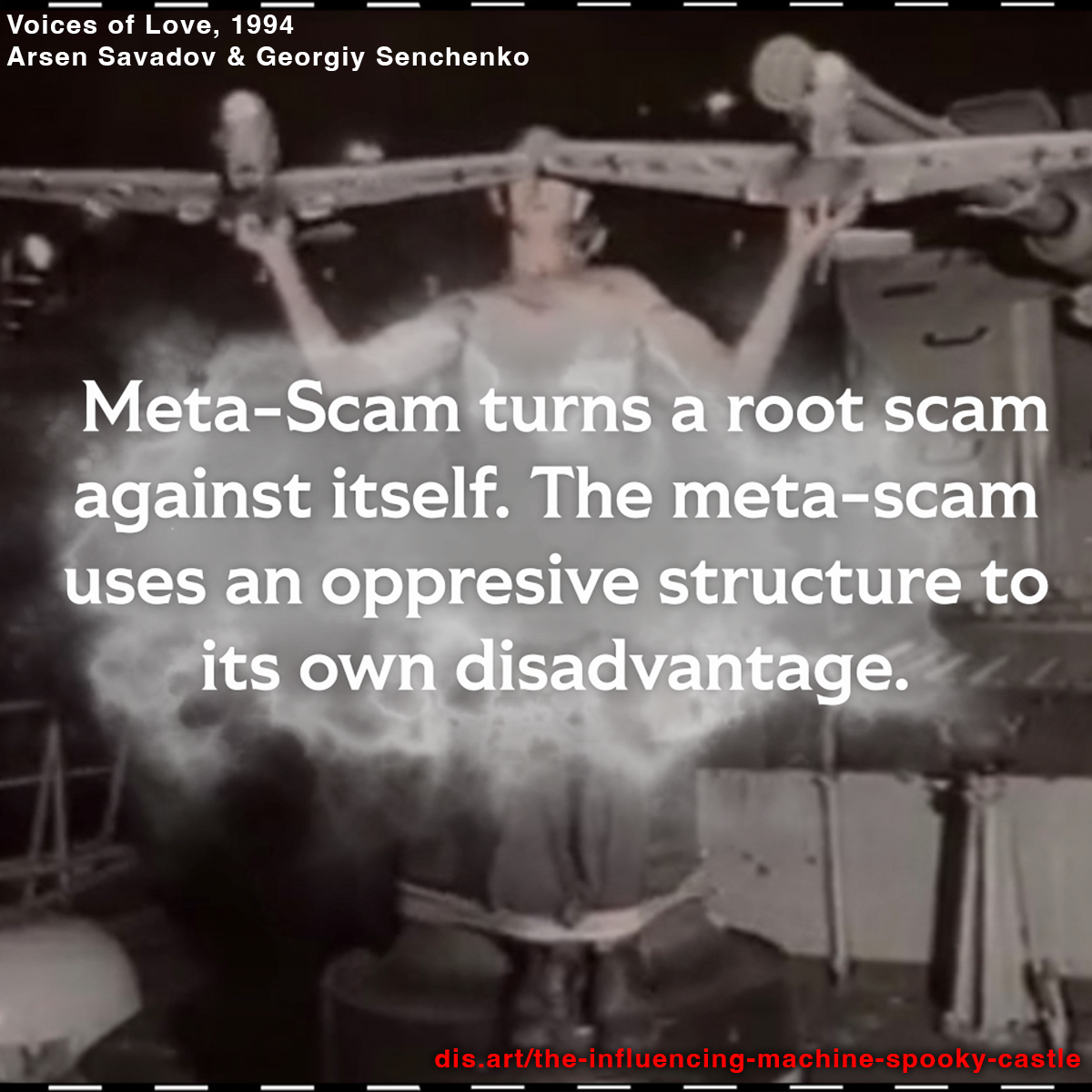
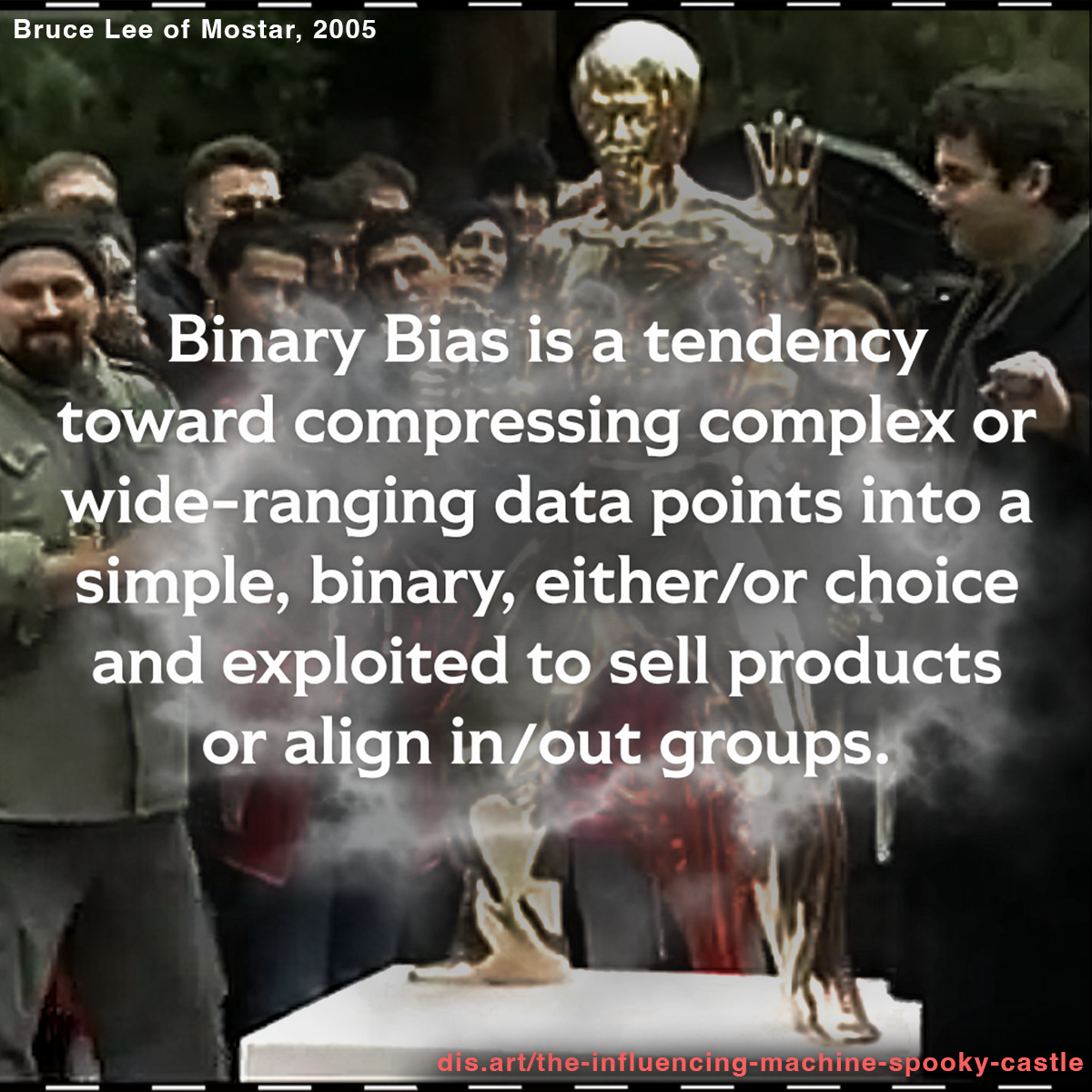
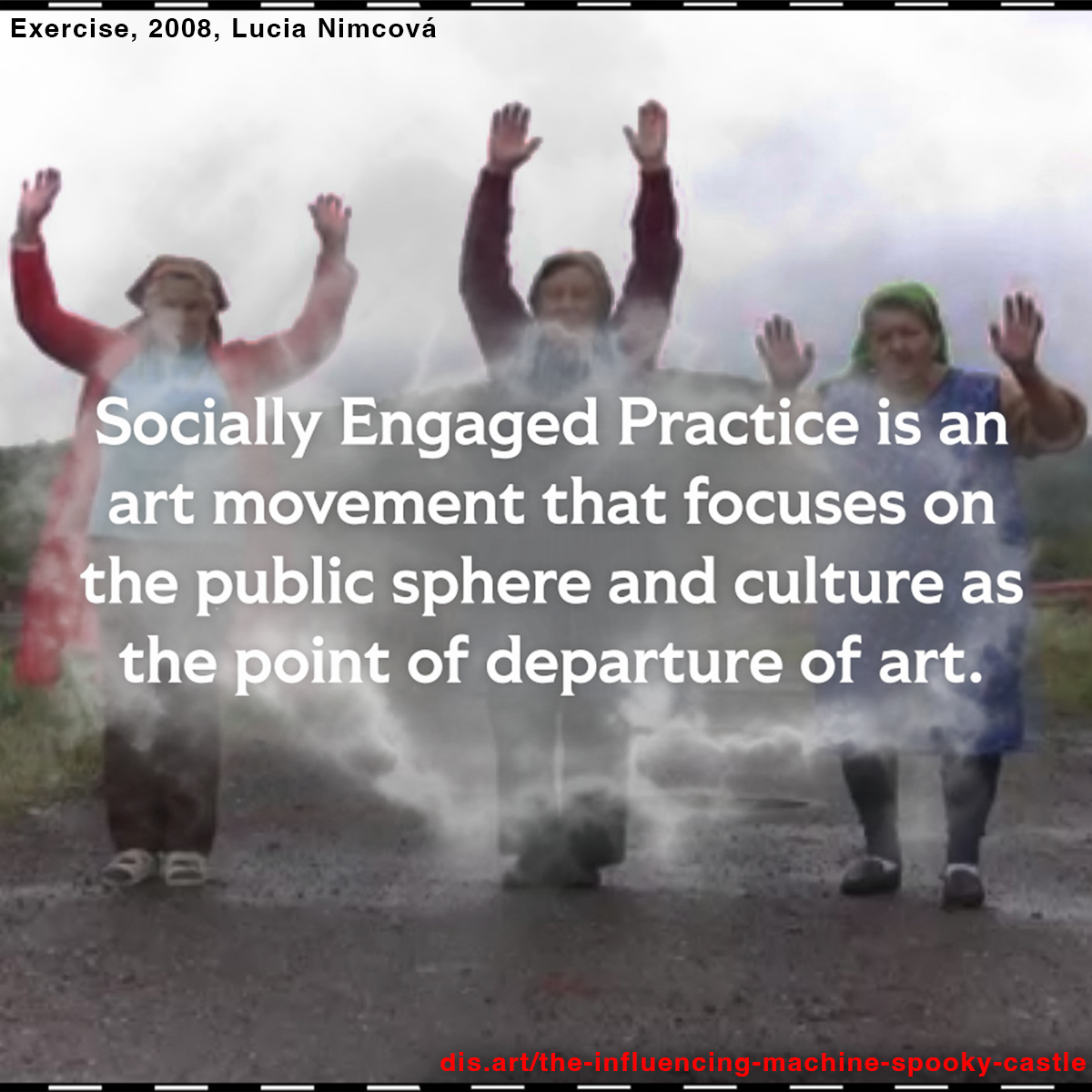
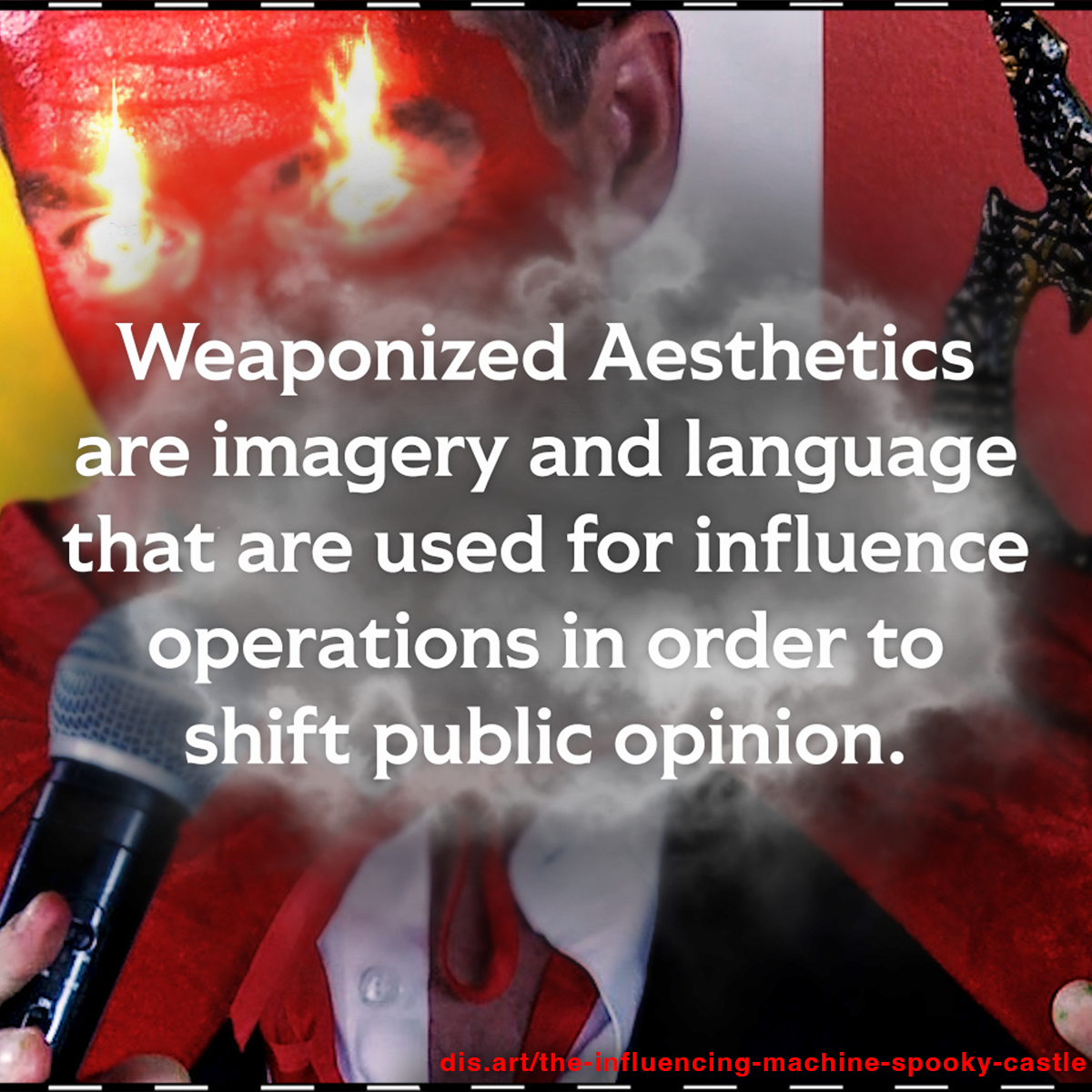
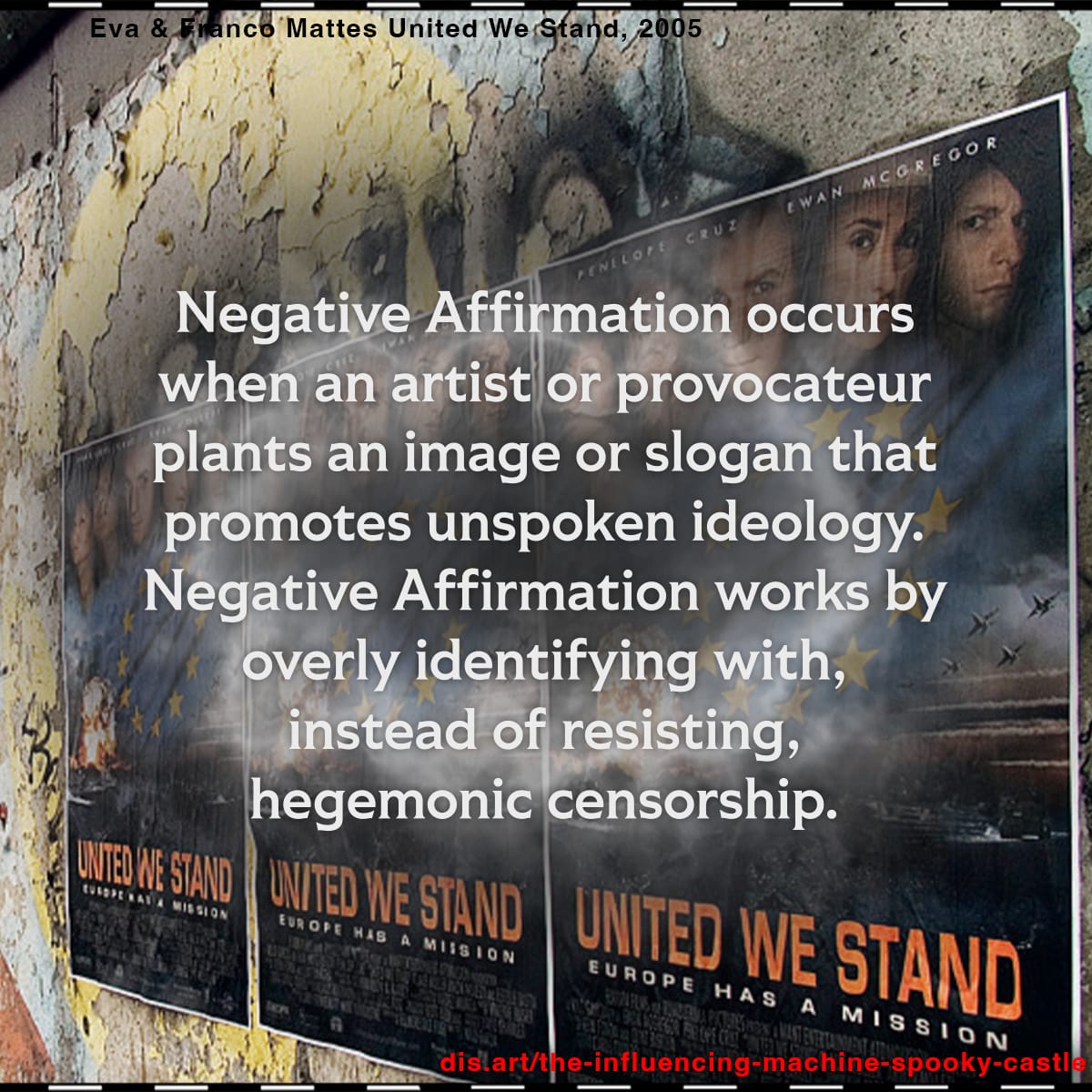
Glossary terms posted as a slider here: https://www.instagram.com/p/CzWfZfkgedl/
Tactical Media is the practice of using mass-messaging practices to subvert popular sentiments, spread radical ideology or fuck-with information systems.
Ritger's deep research into activism, aesthetics and astroturfing can be found on Punctr.art. Explores Auden's interventions into crowds or "audiencing" at centhosten.info/Clack-Auden. Find a collection of examples of hijacked crowds & audience anomalies at clack.life
Active Measures are “situational forgeries” or an attempt to manipulate public sentiment through the production of folklore, rumors or staged events.
Dull Dawn is a hyperstitional project by Aaron Moulton, Mike Morrell & Constant Dullart. This speculative video presents a concept for influence that involves buying followers for spectators and demonstrating how crowds can be manipulated through social media. Produced as part of a finalist proposal for the Dutch pavilion at the Venice Biennale 2019
Bearhugging is a counter-protest strategy of embracing an opposing party, smothering them with praise or even funding in order to muffle dissent and pacify resistance.
Abbey Pusz hones in on one very visual form of bearhugging as an allegory for what is required for generating mass political movements in the age of social media. Read "you can do the macarena to any dance" essay on DNR.
Metascam turns a root scam against itself. The meta-scam uses an oppressive structure to its own disadvantage.
Francis Tseng coined the term in an essay for Rhizome in 2020 in which he reflects on an era of peak scamming (Fyre Festival, Ana Delvey, Liz Holmes) and how collectives are using scammer logic to eek out some wiggle room within massive traps such as Student Debt, Ride-sharing, and Pharmaceuticals.
Binary Bias is a tendency toward compressing complex or wide-ranging data points into a simple, binary, either/or choice and exploited to sell products or align in/out groups.
Kevin Munger, a media theorist who led the Vilém Flusser reading group in New Models, made waves in 2016 with the release of a research showing that ChatBots can be used to reduce bullying and harassment on Twitter. Instead of taking Binary Bias as a given, Munger demonstrates that technology can be used to move past media programming. Here is recent lecture on the topic.
Socially Engaged Practice is an art movement that focuses on the public sphere and culture as the point of departure of art.
Art critic, Ben Davis gives a US-based history of Socially Engaged Art and offers a critique that questions, "What does it mean to celebrate art-as-activism in the presence of real live social movements?"
Weaponized Aesthetics are imagery and language that are used for influence operations in order to shift public opinion.
"Because Physical Wounds Heal" an essay by Jak Ritger on Punctr.art, analyzes how aesthetics are weaponized by military influencers TikTok. Read an update to this story by Günseli Yalcinkaya on Dazed titled "The girlbossification of global warfare"
United We Stand - Advert from Spooky Castle
Negative Affirmation Negative Affirmation occurs when an artist or provocateur plants an image or slogan that promotes unspoken ideology. Negative Affirmation works by overly identifying with, instead of resisting, hegemonic censorship.
Eva & Franco Mattes, United We Stand (2005) demonstrates the possibility of Negative Affirmation to dislodge our default media perception, in doing so, allowing counter-narratives to seep into the collective consciousness. View images of the work here. Read a review of the work here

Beyond The Machine - Auxiliary Works of Interest
"Demo" 2022 - Yoshua Okón & Juan Obando hired the services of “Crowds On Demand,” an LA-based Astroturfing agency, to organize a protest in Phoenix, AZ. They commissioned a demonstration that employs the most common performative paradigms of contemporary civil action and the replacement of a specific cause with silent gestures and empty digital green signs.
Artist, Logan Campbell, created animation for The Dissident, a exposé doc about the Twitter troll campaign and "Pegasus" spyware that was instrumental in silencing of online dissidence and the murder of Jamel Khashoggi.
Visual artist and independent scholar, Noura Tafeche has compiled a massive database of 'cute violence' on social media titled "Kawayoku Archive." Through an in-depth critical reading of this aesthetic trends, Fateche has uncovered an advanced mode through which the war machine is visually propagating today.
David Noel is an artist and educator interested in the downstream effects of the Global War on Terror. On his page he catalogs evolving military aesthetics (among other things), demonstrating just how abstracted and surreal these politics have become. His artwork rejoins military technology with photography.
"YZY GAP PSYOP RED ROUND JACKET" by John Fullmer collects 75 patches from Psychological Operations (some real, some fake) onto a jacket collaboration between Ye (formerly Kanye West) and GAP that was hard-cancelled after the rap artist went off the deep-end of conspiracy theory, self-immolating his reputation on Alex Jones' TV show. This is the paranoid manifestation of "Badjacketing" or the charge of being an undercover agent, often used to distract, divide, and disarm. See first in this series of jackets is here
That's all for now! Thank you so much to everyone who helped, showed interest, shared this story and opened their minds to this history. This is Jak'Ra signing off.
